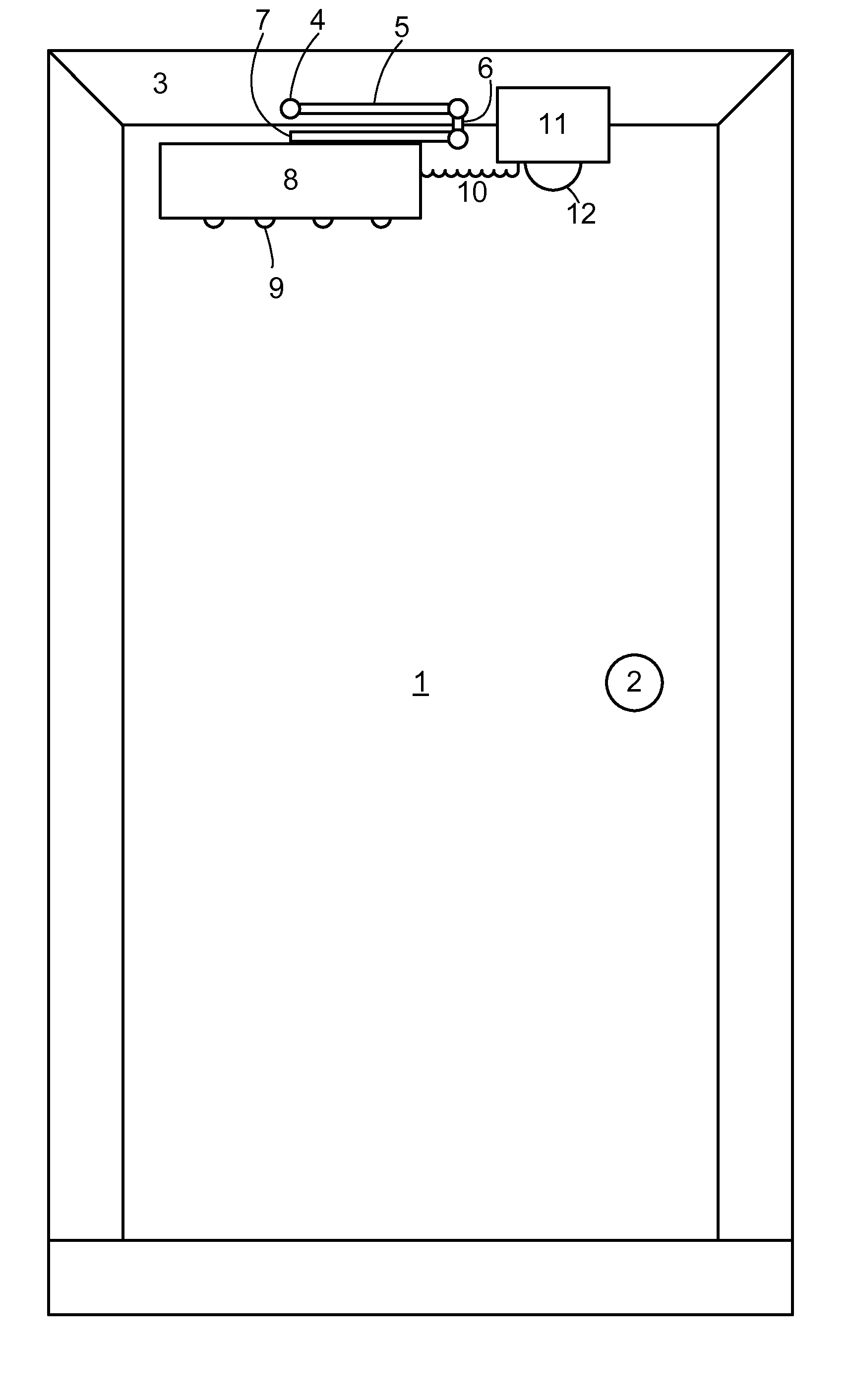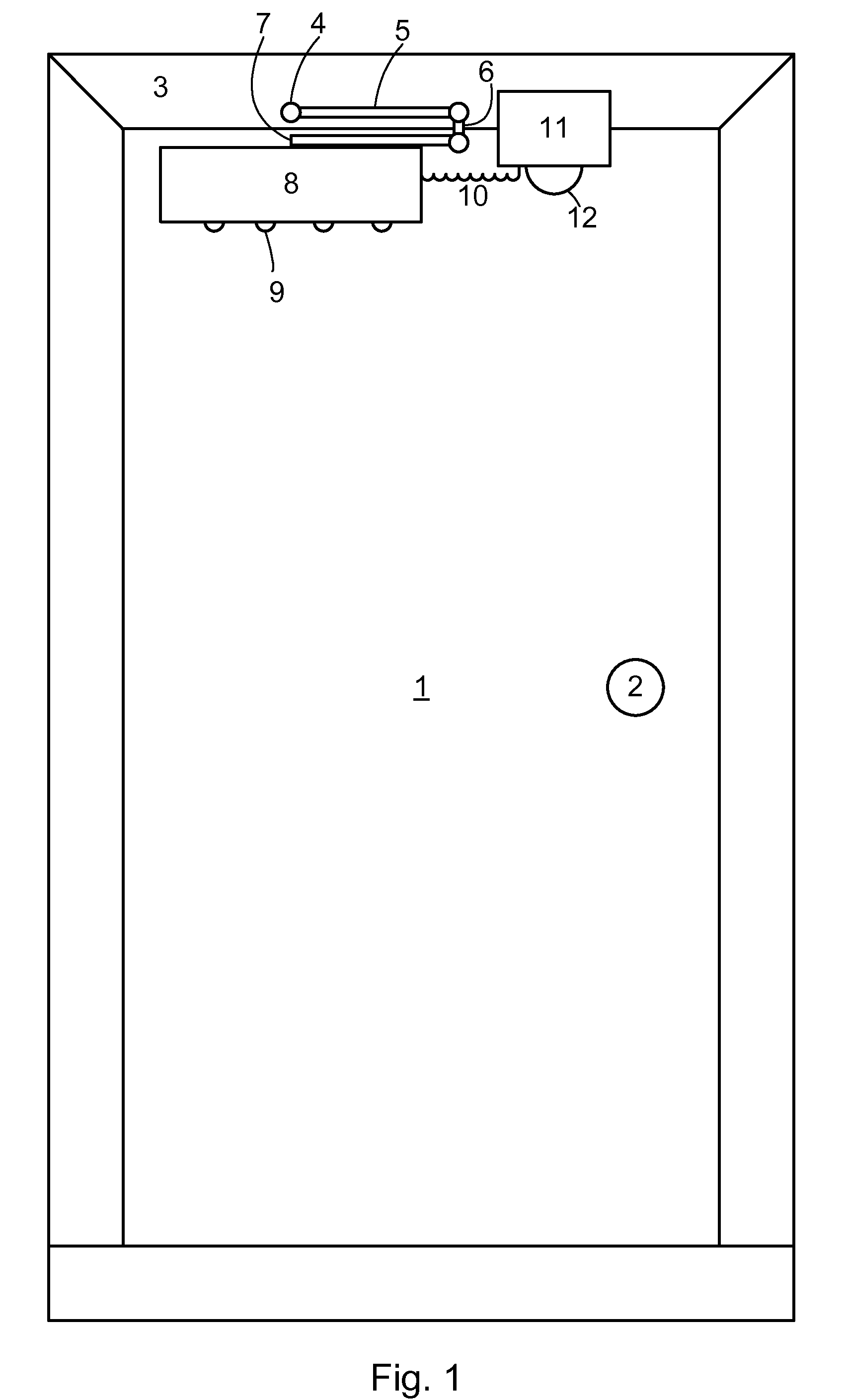Intelligent door restraint
a technology of intelligent restraints and doors, applied in the direction of programmed manipulators, multi-purpose tools, constructions, etc., can solve the problems of inability to fully automatic door control, high cost, and inability to use line power with limited or lacking facilities for close coupling backup, etc., to improve control capability, improve performance, and cost-effective manufacture
- Summary
- Abstract
- Description
- Claims
- Application Information
AI Technical Summary
Benefits of technology
Problems solved by technology
Method used
Image
Examples
first embodiment
[0075]Examples of this intelligence include object sensing in a doorway, fire or smoke detection (and therefore door closure and / or alarm), remote activation, room occupancy sensing, and the like. In a first embodiment, a spring biased solenoid actuator is linked to a needle which controls flow through a restricting orifice 201, 202. The control 210 holds the actuator 201, 202 in the active and therefore hold-open state for so long as an object is in the doorway, or other condition exists for which the door should be held open. This method is fail safe, since a battery failure would result in default hydraulic door closure. A control 210 failure which activates the solenoid actuator 201, 202 would likely drain the battery 211 over a few hours. Thus, a fire safety rating or special exemption may likely be obtained. Since power is required to maintain the solenoid actuator 201, 202 in an activated state, a magneto generator 204 driven by the door opening through gear 205 is preferred....
second embodiment
[0076]In a second embodiment, the actuator employs a latching armature. In this case, it is possible for the battery to fail with the unit held in the open position; therefore this embodiment generally includes a base bleed which causes the door to close within 1-5 minutes, and so provide a graceful and fail safe mode. This type of system may have lower battery drain than a system in which continuous power is required to restrain door closure.
third embodiment
[0077]In a third embodiment, shown in FIG. 12, a collapsible mechanical toggle linkage 220 is reset each time the door is opened by extension of a moveable member 221 within the door closer. See, U.S. Pat. No. 6,031,438, expressly incorporated herein by reference. The control 222 then generates a signal which activates a solenoid 223 which pulls an armature 224, which displaces a seer pin (not shown in FIG. 12) and collapses the toggle linkage 220 when the door closure is to be activated, which allows the normal hydraulic door closure mechanism 225 to operate. In this case, only a single actuator pulse is required to close the door. On the other hand, this acts as an automatic hold-open, and thus would likely be applicable especially for non-fire safety rated operation.
[0078]As can be seen, the control 222 may receive, for example, an external signal to trigger door closure, such as a fire alarm or a timer. A manual reset may also be provided to trigger the door closure in case of c...
PUM
 Login to View More
Login to View More Abstract
Description
Claims
Application Information
 Login to View More
Login to View More - R&D
- Intellectual Property
- Life Sciences
- Materials
- Tech Scout
- Unparalleled Data Quality
- Higher Quality Content
- 60% Fewer Hallucinations
Browse by: Latest US Patents, China's latest patents, Technical Efficacy Thesaurus, Application Domain, Technology Topic, Popular Technical Reports.
© 2025 PatSnap. All rights reserved.Legal|Privacy policy|Modern Slavery Act Transparency Statement|Sitemap|About US| Contact US: help@patsnap.com



